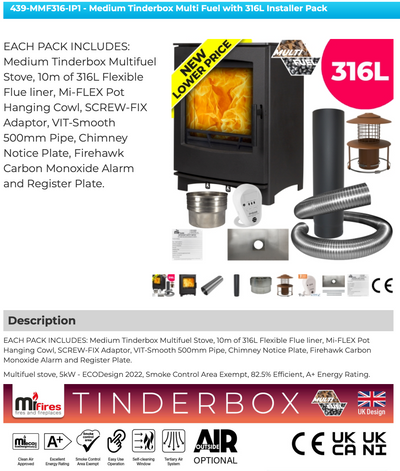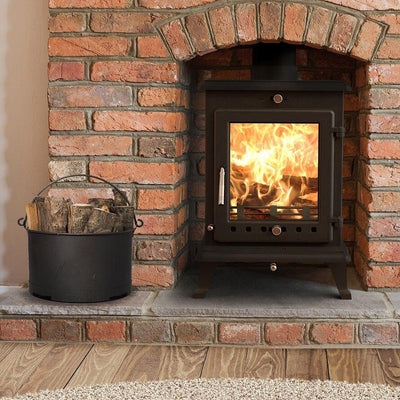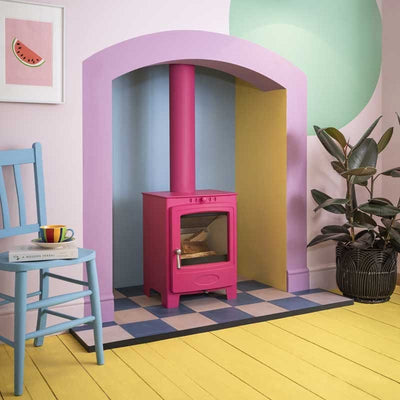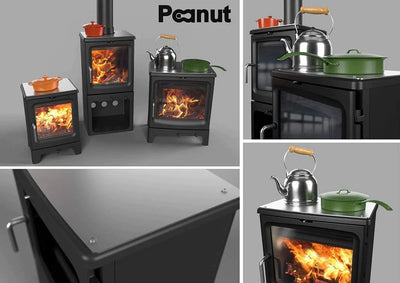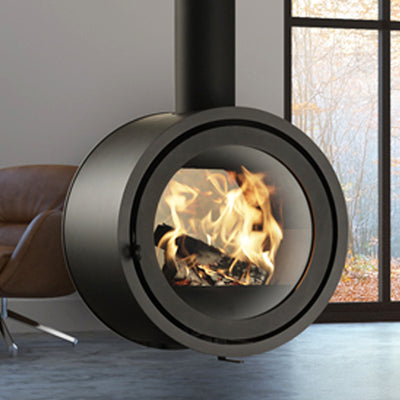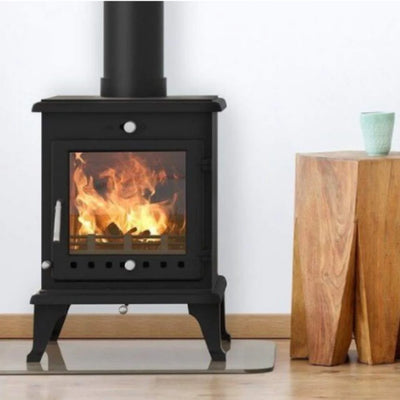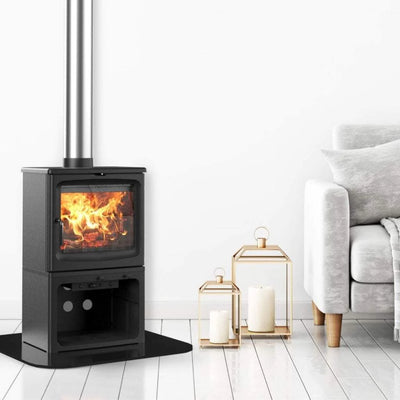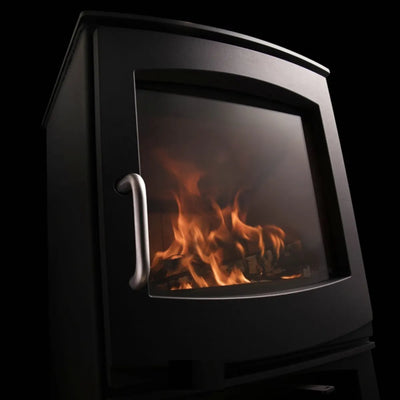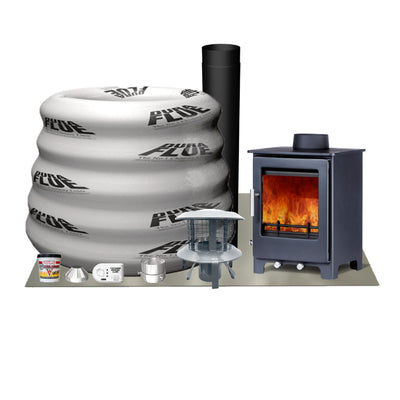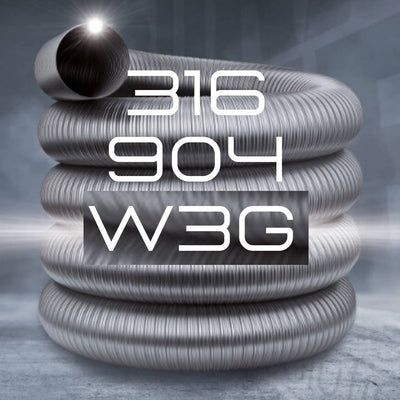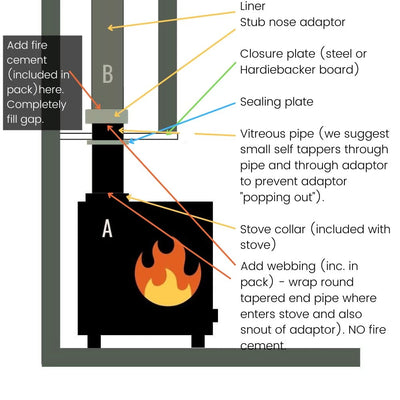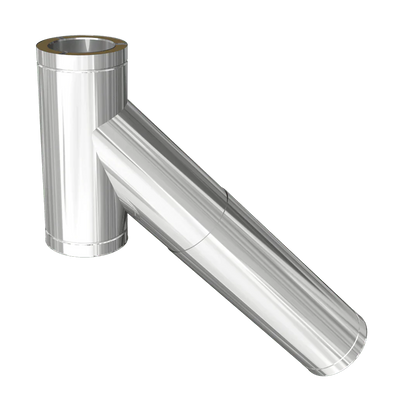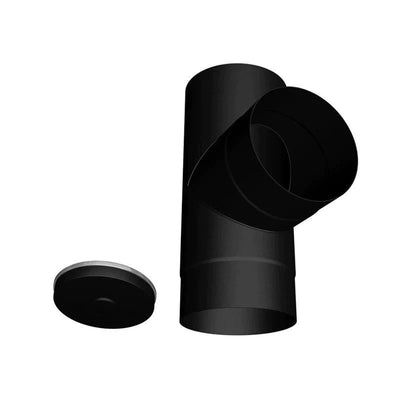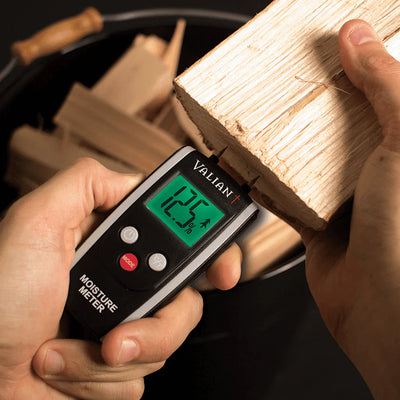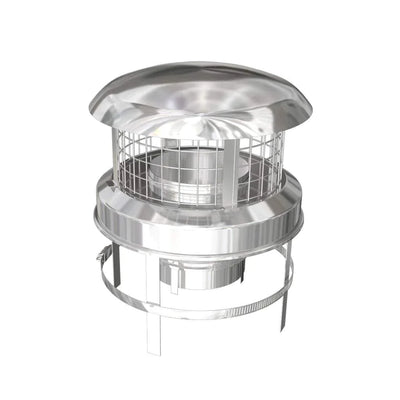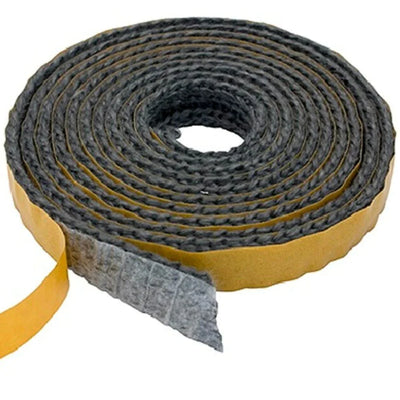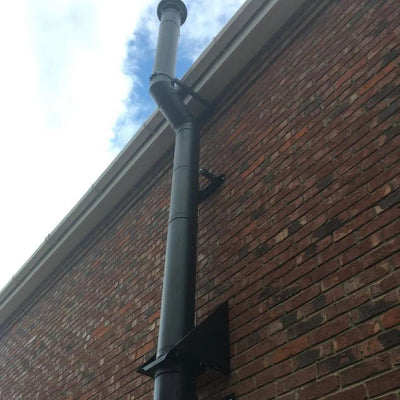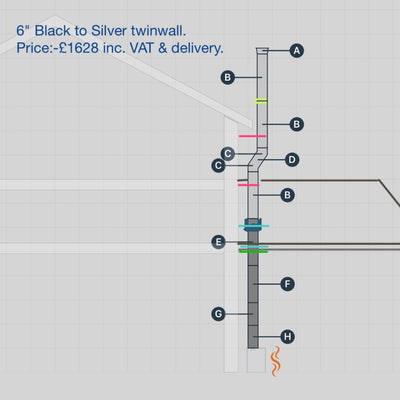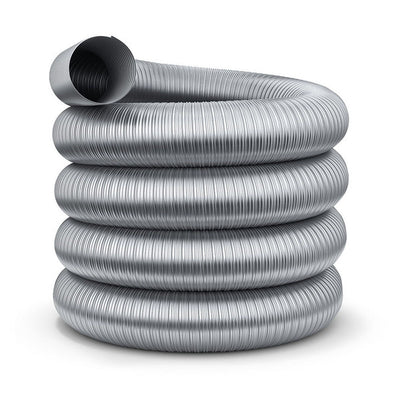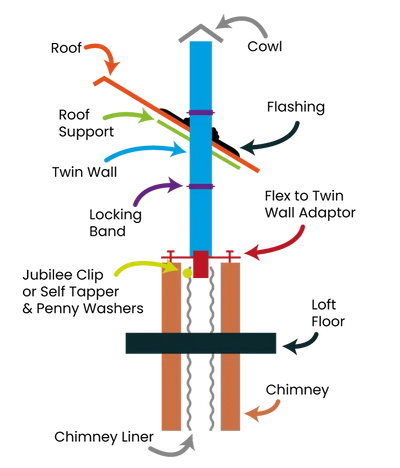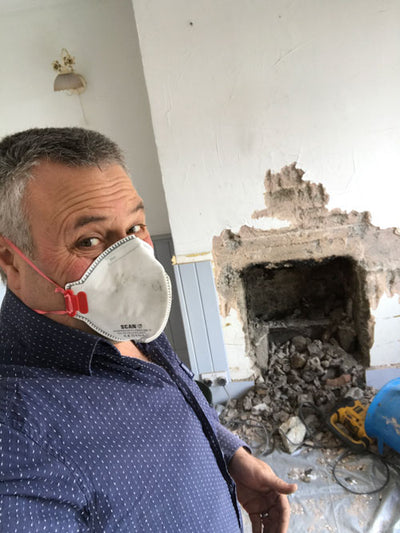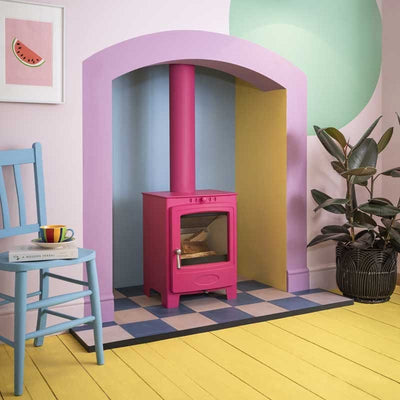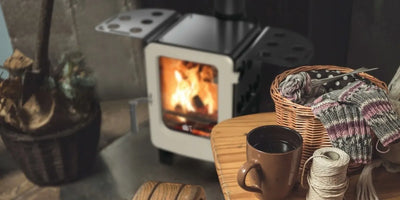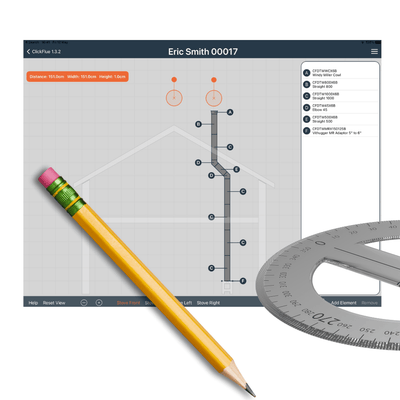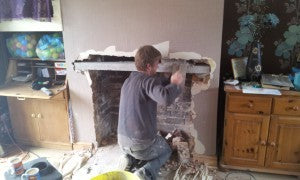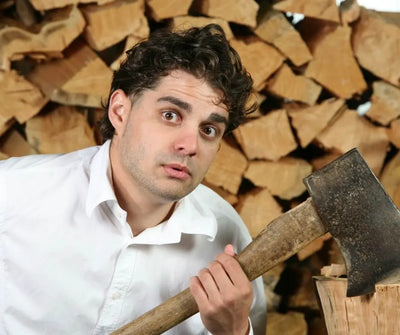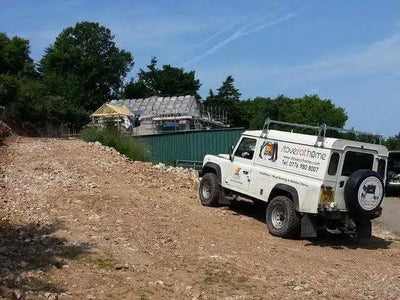Fitting a wood burner with the pipe through the chimney breast
5 mins
Fitting a wood burner with the pipe through the chimney breast

You are here because you wish to connect your stove to a flexible chimney liner but you are NOT inserting your stove into a fireplace recess (builder’s opening).
First of all I must say that I have only installed a stove this way on two occasions and I do not have many pictures. You will have to make a larger hole in the wall than I did or have another hole on the other side of the chimney (we had access to the outside wall of the property).
Note that the flexible liner must stay within the confines of the chimney.

Let’s look at one my scribbles. From the top down you have liner, adaptor, vitreous 45 degree steel elbow, length of straight vitreous, another vitreous 45 elbow with a soot door to assist the sweep and at least 600mm of vertical that slots into the collar of your stove (sealed with fire cement).
Your soot door can be in the vertical pipe OR the elbow.
You may come off the rear of the stove with a T-piece or manufacturer’s 45 degree rear connection (if the manufacturer offers such).
The “long nose adaptor with bolts” connects to the liner with three bolts and is self explanatory when you see it (some you need to self tapper to the liner but I like the bolt versions). You need to add fire cement in the small gap between the adaptor and the liner.

You can cut steel vitreous flue pipe. I use an angle grinder with a very thin metal cutting blade of approx. 1-1.5mm thickness. Make sure you wear long sleeves, eye protection, dust mask and gloves. Please take this very seriously the thin blades can shatter.
YOU CAN ONLY CUT THE FEMALE END OF ANY VITREOUS STEEL PIPE (THE TOP OF EACH PIECE). I use masking tape to get a perfect line and then carefully cut all the way round.
If you slide a vitreous steel elbow onto your long nose adaptor watch it does not protrude too far into the elbow as it will block off part of the pipe’s diameter.

This rule is why you can never go horizontally straight through the wall into your chimney.
I have always refused to cut gloss stove pipe (expensive and may chip).
Your first task will be to open up a hole in your chimney breast using a hammer drill on chisel function. The hole needs to be at a sufficient height to ensure your stove plus a minimum 600mm stove pipe can be acommodated. One way to do this is actually to set up your stove as a practice run. You can use a spirit level with a 45 degree setting to get your flue pipe angle.
I would also open up a second hole near to the ground – you can use this to remove any soot after your chimney has been swept. A sweep will use your new hole to sweep your chimney (you must sweep the chimney before inserting a liner see CHIMNEYS AND LINERS).
You will use your upper hole to connect your adaptor to your liner and your first elbow to your adaptor (with a couple of self tappers. Then you will add your next piece of steel vitreous and so on (using self tappers to connect each). Make sure any self tappers do not protrude into the flue mure than 5mm so as not to hinder the sweep’s brushes.

I would advise making all your connections BEFORE filling up your hole otherwise you might find that the lack of movement in the 45 degree pipe/liner make continuing difficult if not impossible.
The picture on the left shows vitreous pipe passing through a hole in the wall. Your hole will be a lot larger than ths (we had access to a hole in the outside wall in this case to connect our liner). Note that I have protected the flue pipe with fireproof webbing (sticky back). You can also use fire rope but you’ll use a lot of it.
This is in place because the pipe will expand and contract with heat and either damage itself or break down the mortar around it (I have seen many done like this without protection).
You can then mortar up the hole and stick your rosette to the wall (using thin lines of Silicon).

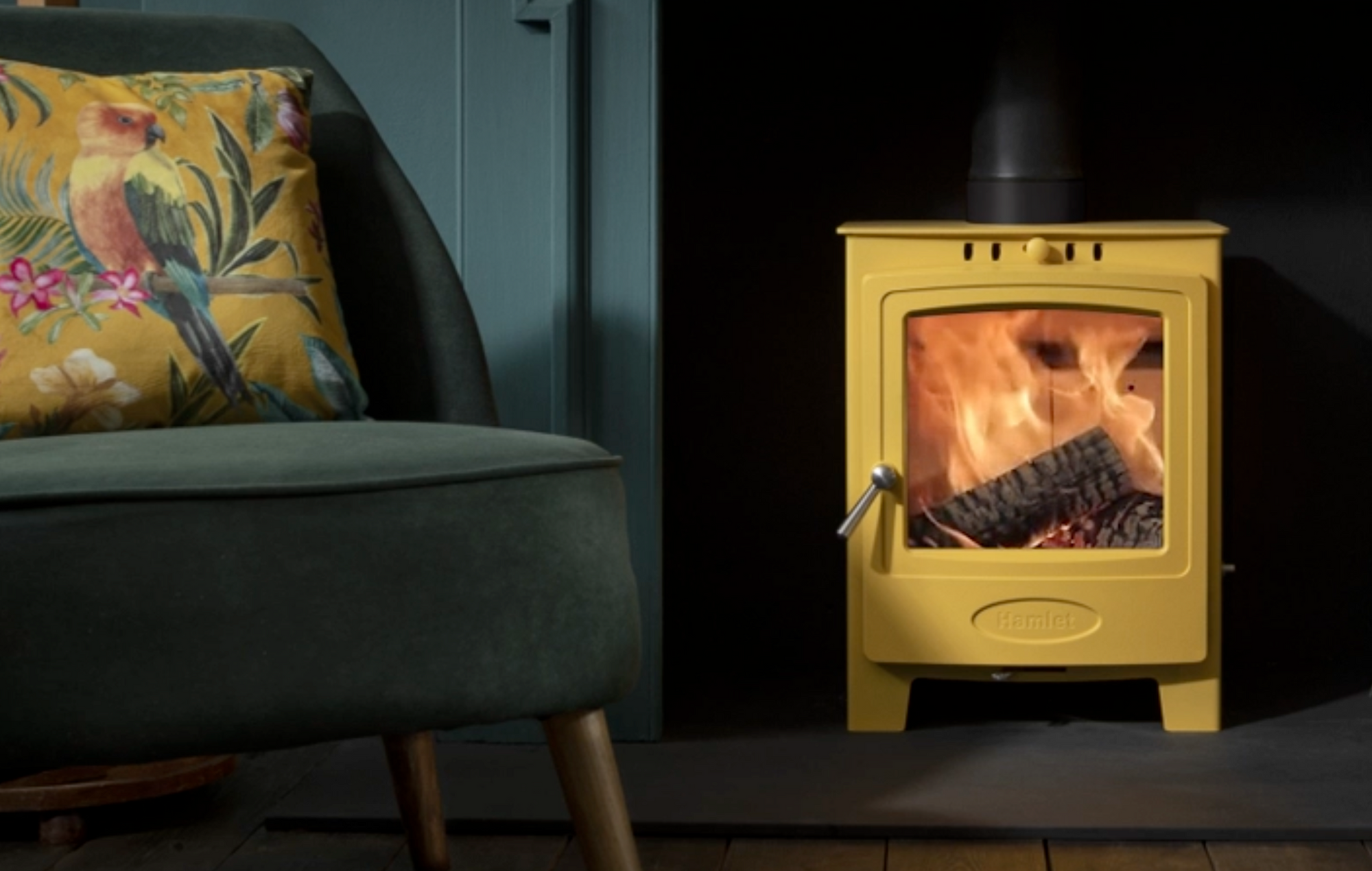
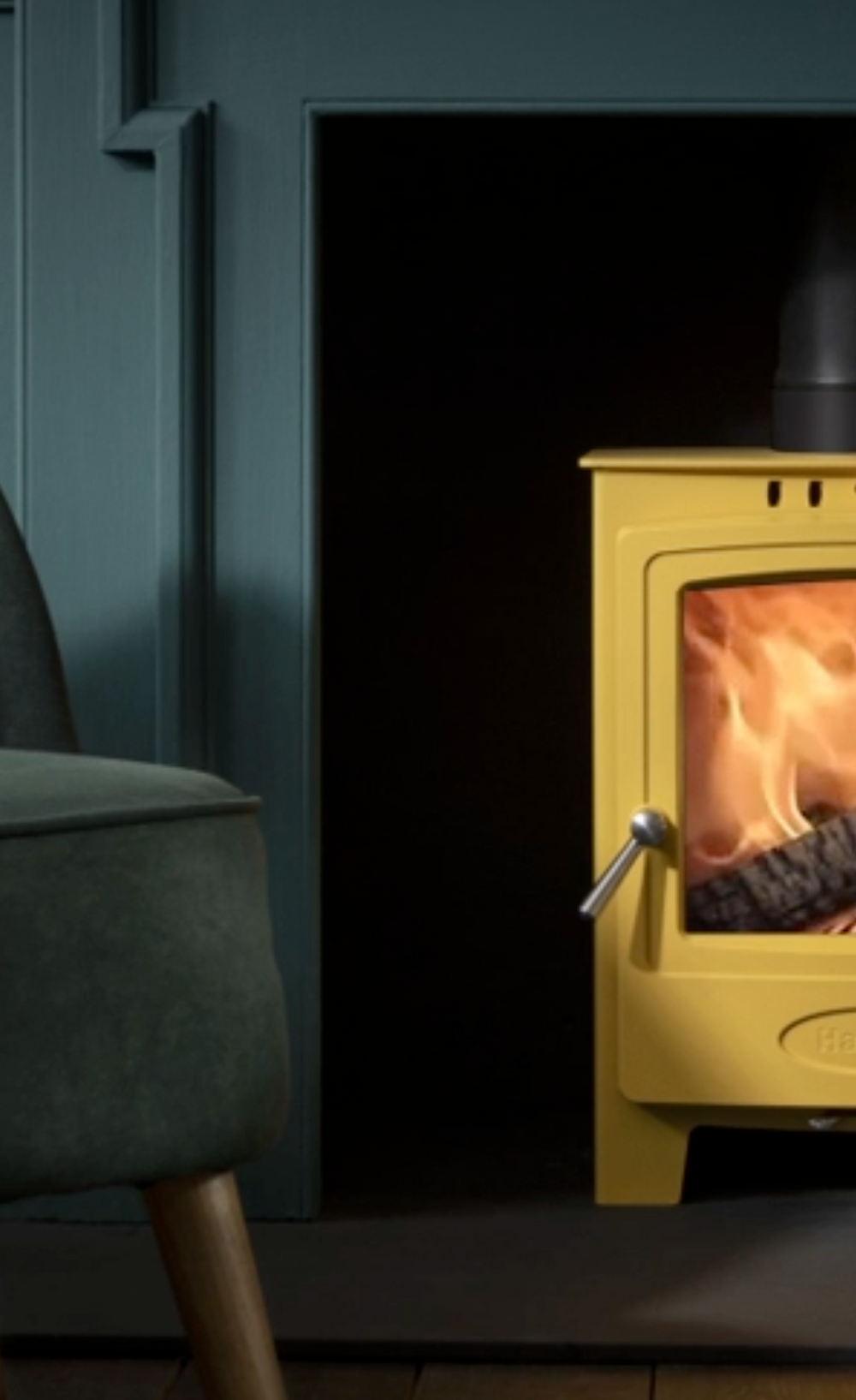
Installing a stove in a fireplace - what do I need?


Installing a stove in a fireplace - what do I need?
FAQs
See all FAQsCosts correct as of April 2023:
Approx. costs if you have a chimney and fireplace ready to use: £750-£1,000 (save £500 by self-installing).
Approx. costs if you have a chimney but need the fireplace "opening up": £1,600-£2,200 (save £1200 by self-installing).
Approx. costs if you do not have a chimney and need a clip-together flue: Shed £475-£700. Bungalow £1500. 2-storey house £2500. Save £1,000-£1400 by self-installing.
Above figures include labour and materials but no appliance.
We, of course, advise you to purchase your stove and materials from Stovefitter's to ensure quality goods are installed (some installers use budget materials to increase margin). If you buy your stove from us (rather than your local small shop or installer) we have a lot more power when approaching manufacturer's with a warranty issue. Why is that? Because we buy many hundreds of stoves a year from these brands.
We do not fit stoves.
But we know a few who do!
Google: Hetas installers
Hetas are the trade body of registered UK installers.
Most installations will require that you slide a chimney liner down your chimney (flexible metal tube 5" or 6" in diameter). Do you have a narrow chimney and want to lessen the risk that a liner might not go down your chimney? Then make sure your chosen stove can use a 5" liner.
Must I line my chimney? Best read this article but most likely the answer is yes. Do I have to fit a chimney liner?
DEFRA-Exempt wood burning stoves with a 5″ collar can usually be fitted to a five inch liner rather than the usual 6″ minimum, making the installer's job much less stressful.
ALL OF THE 5KW STOVES WE SELL CAN BE FITTED TO A 5" CHIMNEY LINER.
I seriously suggest any self installer fits a 5" liner unless they know their chimney is large enough for a 6"!
What is the best chimney liner? Silvacore 904 (we sell it so of course we will say that ;-). What is the best chimney liner?
Useful links
Will your stove require an air vent within the room (some stone walls are very difficult to drill)?
5kW or under and wood burning stoves often do not require an air vent (new builds always require an air vent).
Useful links
What is the maximum output in kW of your "5kW" wood burning stove? The majority of manufacturers just specify the “nominal output” and this figure means very little in real life. The nominal is a figure the manufacturer chooses to sell the stove at - the stove is capable of reaching at least this output with one fuel load. Nominal means "capable of". But it is not the maximum.
Check out the size of the area where the logs will go (firebox size) as this varies enormously. The kW output is completely dependant on the amount of logs burning at any one time - more logs burning equals more heat. If you can fit three logs in stove A and just two logs in stove B then stove A will be capable of throwing out 33% more heat.
DO NOT TRUST MANUFACTURERS’ kW RATINGS as manufacturers specify what output they desire to sell the stove at and testing allows for much “playing with the figures”. This is why you can get very small 5kW stoves (e.g. Aga Little Wenlock) and very large 5kW stoves (e.g. DG Ivar 5 by Dik Geurts which is actually rated 5kW but has a MUCH larger firebox than the Ekol Crystal 5 by Ekol Stoves). A Crystal 5k might get to 5kW and not be capable of any higher whilst a DG Ivar, despite being rated at 5kW, can get to 8kW with a full fuel load.
Note that, over time, one might damage the internal firebricks of a stove by running at a higher load than the manufacturer's suggest. Firebricks are easily replaceable.
Useful links
Will your wood burning stove fit in your recess WITH the required air gaps around it? This is obviously not an issue if your stove will be freestanding.
Air gaps to non-combustible materials (brick, stone etc.) are usually "as close as you like" legally but manufacturers will sometimes specify a recommendation. This recommendation is there to allow heat to escape from the recess into the room - so you get the heat benefit rather than the heat soaking into the building structure and being lost. If no gap to non-combustibles recommended then we suggest 50-100mm air gap left and right of stove, 50mm behind and 100mm above.
Are you in a Smoke Control Area (usually built up areas)?
Choose your stove accordingly.
A stove must be DEFRA-Approved if you wish to burn wood in a smoke control area.
ALL OF THE STOVES WE SELL ARE DEFRA APPROVED FOR SMOKE CONTROL AREAS.
In simple terms if a stove has an efficiency rating of 70% then 30% of the heat from your logs goes up the chimney.
If a stove has an efficiency rating of 90% then only 10% goes up the chimney.
So think of this in terms of how many logs you have to chop/buy.
Example: A Saltfire Peanut 5 by Saltfire Stoves in Dorset has an efficiciency of 80%.
A tall chimney (6m or more) that is lined will be happy with an efficient stove.
Efficiency importance can be said to be overrated and anything between 75% and 85% is fine. Go much higher and performance can actually suffer (smoke in room when opening door to reload, blackening of glass).
Many modern stoves can go on 12mm thick hearths. Others require full, 5″ thick constructional hearths. All of the stoves we sell state whether or not a 12mm hearth is suitable.More about hearths for wood stoves here.
Helpful links
Can you can talk to somebody on the phone should you need to after the wood burning stove has been delivered, especially if you are self installing? Will the staff at “wesellzillionsofstoves.com” be able to assist with any installation issues? What if there are any problems after install?
Do yourself a favour before ordering stoves or materials on the Internet: Go to Trustpilot and type in the company name before you buy. Some companies advertising at the top of search engines are not good news - check for yourself.
When striving to find thebest 5kW wood burning stovesyou will likely be bewildered by the choice. There are many to choose from. The question I get asked most in our shop is “why should I pay <£1,000> for this one when this other one is just <£500>?”. Here is the very simple answer:the cheaper wood stoves are made in Chinaor Eastern Europe whilst the more expensive are made in Western Europe (or sometimes the USA). Here are a few examples where a more expensive stove might excel over a cheaper stove:
- Aesthetics (more time spent on design)
- Hinges (sometimes hidden on more expensive stoves)
- Better quality glass
- Thicker steel (longer life)
- Improved door locking mechanisms
- Longer warranty
- Improved controllabilty of flame due to more resource invested on design of air flow within stove
- Brushed steel fittings instead of cheapy chrome look
Open and close the door on a cheap Chinese stove. Then open and close the door on a DG stove, Arada stoves, Woodford stoves, Hamlet stoves or Saltfire stoves. You’ll understand the difference.
Stove pricing reminds me of wine pricing. A £20 bottle of wine is not double the quality of a £10 bottle of wine (the drinking experience might be improved by 20% as an example). We are talking “the law of diminishing returns here. They are all “fire in a metal box” at the end of the day.
Yes. However, there are specific regulations and restrictions in place to address air pollution concerns, particularly in areas designated as Smoke Control Areas. In these areas, only approved "smokeless" fuels or exempt appliances, such as Defra-approved wood-burning stoves, can be used. These stoves are designed to burn wood more efficiently and produce fewer emissions.
All the stoves we sell are DEFRA approved and Eco-design approved and suitable for all areas of the UK.
Terminology
View all TerminologyA stainless steel tube, slides down a brick/stone chimney to provide a smooth and safe route for smoke.
All of our stoves are approved by DEFRA to burn wood in all UK locations including Smoke Control Areas (towns and cities). Not all stoves are, so be careful if buying elsewhere.
All of our stoves are ECODESIGN approved to be sold in the UK. Not all stoves are, so be careful if buying elsewhere. ECODESIGN is mandatory by law since January 2022.
The base your stove sits on.
If the chimney is the polo mint then the flue is the hole.
More buying guides
View All
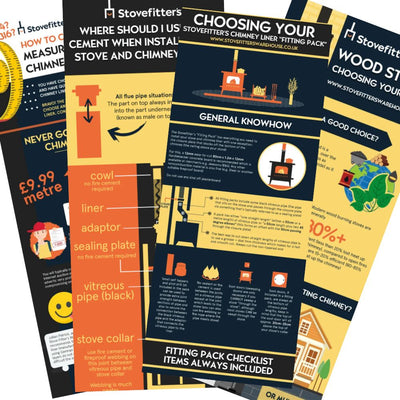
How to choose a wood burning stove for your property (includes infographic)
Infographics

What size wood stove do I need? Don't let manufacturers fool you!
Buying Guides
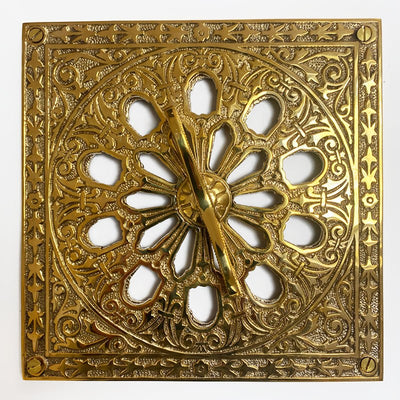
Do I need an air vent for a wood burning stove? If I do not bother?
Buying & DIY

Knowledge Tree: Process of buying and installing a wood burning stove
Buying & DIY
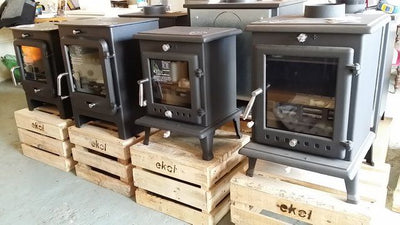
Chinese wood burners – should I buy one or are they all crap?
Buying Guides

What else do I need to buy to install a wood burning stove?
DIY Guides

Infographics for wood burning stove purchase and install
Infographics
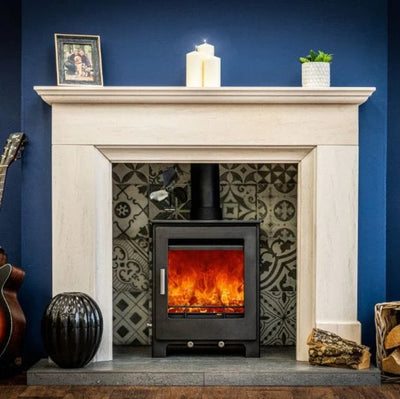
Wood burning or multifuel stove? A stove fitter decides.
Buying Guides
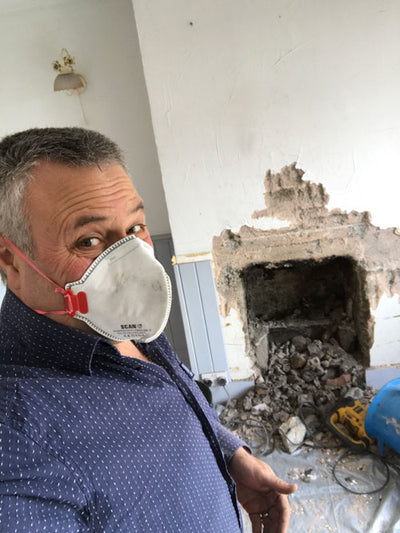
A few words from Julian
Buying & DIY
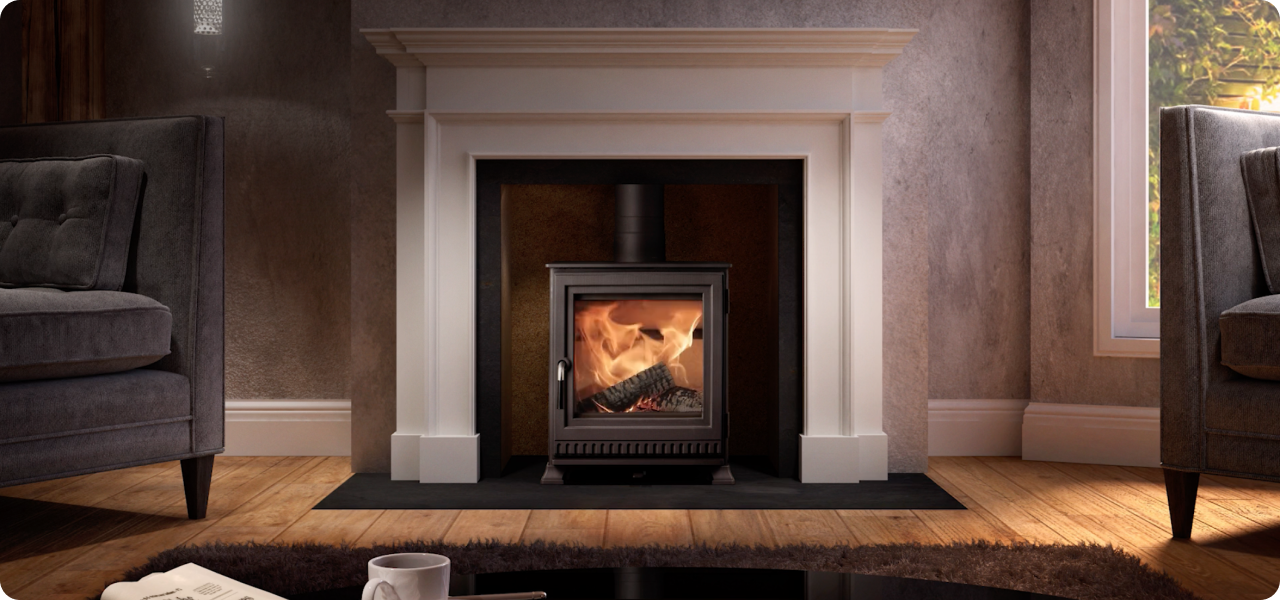
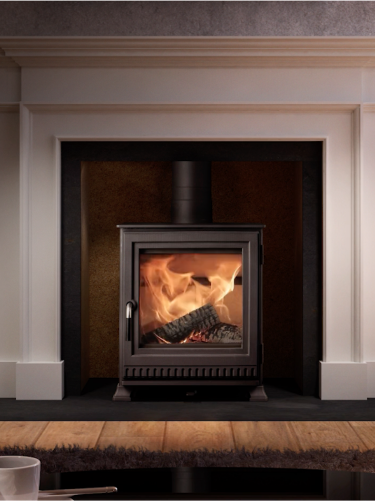
Find my perfect stove
Answer 3 simple questions and we will show you the best Stoves for your space.


